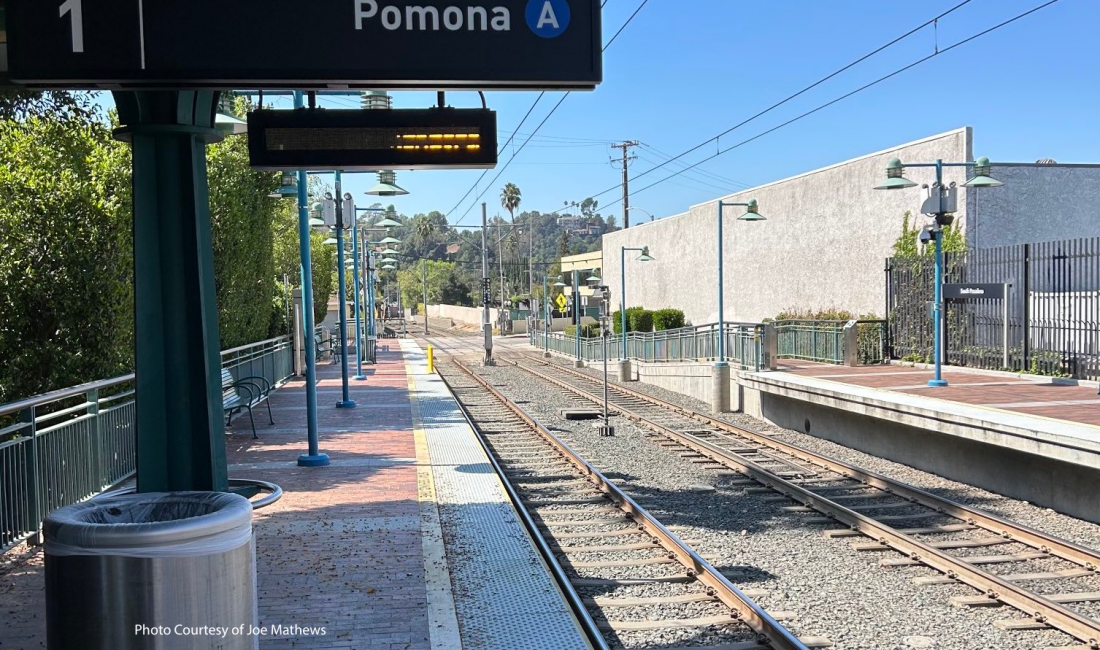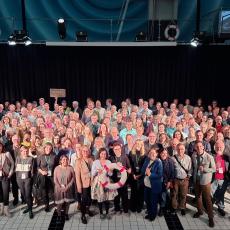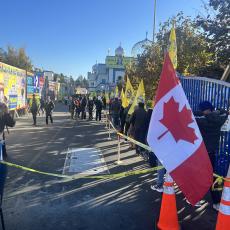The A Line Connects My L.A. Life. But It's Slow and Frustrating
Where do you draw the line?
The A Line, on the Los Angeles Metro rail system, is now the longest light-rail line in the world, running for 58 miles, with 44 stops.
I rode the whole thing myself on a September weekend when Metro offered free fares to celebrate the A Line’s $1.5 billion extension, built on time and on budget by the Foothill Gold Line Construction Authority. These new 9.1 miles and four stations take trains all the way to Pomona in eastern Los Angeles County.
I may be the ideal customer for the A Line, because it touches so much of my Southern California life.
I live six blocks from the South Pasadena Station. I grew up two blocks from its Fillmore Station, which is next to my pharmacy and my kids’ pediatrician. The A Line has stops in Old Town Pasadena (where I hung out as a teenager), in Highland Park (where I hang out now), and at Sierra Madre Villa in East Pasadena (two blocks from my car mechanic).
On the south end of the line is Long Beach, the California hometown of my father’s family. North from there, it goes through Compton and South L.A., which I covered as a reporter, and where family members are buried. The A Line has a downtown stop just steps from the old L.A. Times building, where I once worked, and from the Bradbury Building, the home of the think tank where I’m a fellow. As it rolls east through the San Gabriel Valley, the line stops near fields in Duarte, Arcadia, and Azusa, where I’ve coached youth baseball. Further on, at the line’s eastern end, are new stations in Glendora, San Dimas, and Pomona, where members of both sides of my family have lived and gone to school.
So, I want desperately to love the A Line.
But, as a passenger, I kind of hate it.
I love that it can get me to so many exciting locations, including 19 colleges and L.A. County’s Fairplex, across the street from the new La Verne station. But I hate how slow the A Line goes. It takes 2 hours and 27 minutes to get from Pomona to Long Beach (an hour’s drive), in part because the trains must stop at red light intersections.
I also hate how the A Line goes close to, but still too far from, the places where L.A. holds its biggest events. It has six stops in Pasadena, but none at the Rose Bowl (you have to take a shuttle bus from Memorial Park). It stops in Chinatown and at Union Station, but not at Dodger Stadium. I’m also frustrated that, because of San Bernardino’s decision to block a planned extension of the line into that neighboring county, the A will never take me to Ontario airport.
The A Line’s purpose is to get us out of our cars. But its stations’ designers can’t imagine a life without cars, or can’t correctly calculate the demand for “park and ride.”
Many stations are bordered or surrounded by large, empty parking lots, occupying too much space where new, transit-friendly development should be.
This is true of the new stations (especially Glendora and La Verne, the latter of which didn’t need any Metro parking at all, with the massive Fairplex lot next door). It’s also true of the old. In Pasadena, multi-story Metro parking garages at Fillmore Station and Sierra Madre Villa Station sit empty of cars, and are occupied by unhoused people and open-air drug markets.
The A Line takes us to some of the sweetest-smelling places in SoCal—outside stations, you’ll encounter bougainvillaea in Long Beach, blossoming willows in San Dimas, and, of course, the roses of my Pasadena hometown.
But inside the train, the cars reek, often of urine and excrement. Floors and seats are covered in dried liquids of unknown provenance. Do they ever clean these things?
I love how cheap the A Line is, just $1.75 per ride, however long.
I hate that you get what you pay for.
When Metro opened its new LAX airport station in June, I excitedly hurried over to check it out. Upon arrival, I couldn’t hear myself think. Not because of crowds (the place was pretty empty) but because of a malfunctioning alarm system, announcing an evacuation that had not been ordered. It had been on for four hours, said a Metro staffer, who explained that she couldn’t figure out how to turn it off.
I tried in vain to interview passengers, but we couldn’t hear each other, and soon I had a headache. The pain was not helped by having my two-plus-hour, two-train-change ride home—a journey that takes just 50 minutes by car.
Let’s give credit where credit is due. Metro is growing so fast in a very L.A. way. The system has become almost as big and sprawling as its metropolis. The A Line, with that world-record length, is emblematic of the system.
Unfortunately, like the rest of L.A., it doesn’t quite work.




